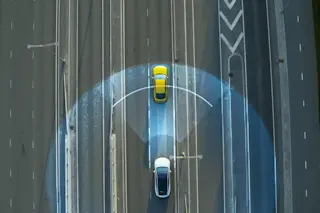The Washington Post reports on the mad scramble among big companies to get a few billion dollars from the Department of Homeland Security to watch the U.S.-Mexico border and prevent illegal immigration. It seems DHS will soon decide between the players, each of which offers up its own we've-got-the-hammer-for-this-nail solution: Northrup-Grumman's got drones, Ericsson has PDAs, and Lockheed Martin's boasting (yes) blimps.
It wouldn't take a cynic to think that in 20 years this might be a cautionary example studied in intro-government classes around the country -- literally a textbook boondoggle. ("It's a little bit scary when the government throws up its hands and says, 'We have no idea how to do this. Please tell us,'" Deborah W. Meyers with the Migration Policy Institute tells the Post.)
Couldn't the federal government learn from recent lessons about better ways to spend money on hard-to-plan projects? When the X Prize made NASA ...













